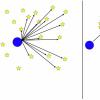Interestingly, in waiting 3 hours before exercise, with the following variation on protocol, I find my output capacity is nearly doubled.
- 0h
- - 3g niacinimide
- - 5g ribose
- - 2g pyruvate
- - 3g lactate
- - 2g TMG (account for niacinimte metabolism)
- - AMPK activators (mitophagy)
- - - jiaogulan/gynostemma 1g
- - SIRT1 activators (mitophagy)
- - - Fisetin 100mg
- 1.5 hr
- - apigenin (said to have faster metabolism (1hr)) (AMPK activators (mitophagy)) 100mg
- 3hr
- - exercise
Apart from the potential balancing component of lactate to pyruvate decreasing NAD/NADH ratio, I'm inclined to think this is a result of having hyper fused or fission-deficient mitochondria (my NAD levels were previously nearly always low)
"Here we observed further clustering of nucleoids in mitochondrial fission-deficient cells via mitochondrial hyperfusion. "
"It was recently reported that mitochondrial hyperfusion with highly developed cristae occurs during nutrient starvation to protect mitochondria from autophagic degradation and sustained cell viability "
"However, even though mito-bulbs have highly stacked cristae with abundant mtDNA, they do not enhance respiration, and the physiological roles of mito-bulbs in vivo and in healthy cells remain to be conclusively analyzed."
Interestingly, also from that paper:
"In contrast, live imaging of mitochondrial nucleoids in mammals, higher plants, and yeast has revealed that mitochondrial fission occurs independently of nucleoid fission "
A few of notes and questions.
1. Fission doesn't necessarily decrease ATP production - (hyperfused mitochondria is inefficient)
2. How long does fission take. Could the reduction in output capacity you see be a result of working out during the process of fission, in which there would indeed be an ATP production diminishment?
3. Wouldn't it be more sensible to work out after fission occurs instead of during? IE, isn't the idea to destroy faulty mitochondria, not to make them by inducing stress during fission?































































